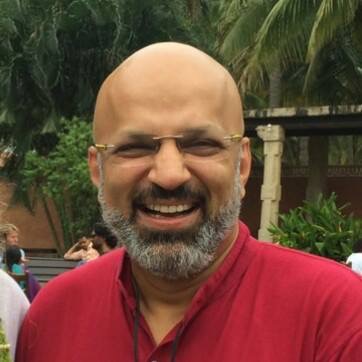It’s the beginning of a new year! As we ended 2018, I talked to a lot of young and old people in Mumbai to test their view of the world. I got a wide range of responses—some optimistic and some pessimistic. This blog mainly addresses the pessimists!
I look back at my life and it’s been good. People retort that people like us are the exception. Then I look at the lives of our chauffeur and maids, they tell me that their lives are good, and better than that of their parents. People retort that urban lives are different from those in rural areas. Then I look at the lives of people in the rural areas that I spend some time in—Maharashtra, Manipur, Nagaland, Ladakh and Rajasthan—they tell me that their lives are mostly good, especially when compared to those of their parents. So why are people so negative?
It is easy to get swayed by the negativity that we read and see in the media. Social media gives people the opportunity to voice themselves—and most are critical; we do not see social media building a lot of positivity.
A friend of my son remarked last night that positive news does not sell. We will not open the newspaper every day if we constantly read that the world is getting better. Instead if we read about rapes, suicides and terrorism, we will wait for the newspaper to read the next bit of news. Negative news is often more dramatic than positive news. This is the ‘Negativity Instinct’ that Hans Rosling talks about in his book Factfulness—our tendency to notice the bad more than the good.
Why do we have a negativity instinct? Rosling lists three reasons:
- Romanticising the past. We falsely remember that the past was rosier than it actually was.
- Selective reporting by journalists and activists.
- The feeling that as long as things are bad it is heartless to say they are getting better.
And India is not different. Lasse Berg, wrote a report on rural India in the 1970s. Twenty five years later he wrote about how living conditions had improved. When he showed the villagers pictures from 25 years back they were shocked and couldn’t believe that things were so bad 25 years back. Similarly we can compare life today with life before the 1991 liberalisation. And the media is as negative and noisy as in the rest of the world. Yes, things are not that great in India and there is a lot of poverty. But the percentage of the South Asian population living in absolute poverty has gone down from 61 per cent in 1981 to 25 per cent in 2011. And more girls are in school today than before.
Some of the global positive changes that Rosling lists include:
- Four per cent of children die before their fifth birthday; the number was 40 per cent in 1900
- 10 per cent of children work full time under bad conditions; the number was 28 per cent in 1950
- 0 per cent of countries have small pox cases; the number was around 130 in 1900
- 11 per cent of the population is undernourished; the number was 28 per cent in 1970
- 1 person died in battle per 100,000 people in 2016; the number was 201 in 1942
- There are 193 countries where women have the same vote as men; the number was 1 in 1893
- 56 per cent of the population live in democracies; the number was one per cent in 1816
- 88 per cent of people have water from protected sources; the number was 58 per cent in 1980
- 85 per cent of the population have access to electricity; the number was 72 per cent in 1991
- 4,000 kg per hectare is the cereal yield; the number was 1,400 in 1961
How can we control this negativity instinct? Rosling suggests the following:
- Always keep two thoughts in mind—the world is still bad, but it is getting better. Yes, we still have a lot of poverty (and that is a tragedy), but the numbers are shrinking.
- Expect bad news. And when you read bad news, ask yourself if the news was positive, would you have heard about it? For example, as Rosling suggests, we see headlines of kids drowning. Do we see headlines of kids not drowning?
- Don’t censor history. Throw away the rose-tinted glasses that we use to look at the past so that we can appreciate the world we live in today.
Someone recently told me, “People who fret over whether the glass is half full or half empty miss the point. The glass is refillable!” Here’s wishing you a fabulous 2019!
Want to share your story of how you thrive? Write to us at [email protected]
More on Thrive Global India:
Ask Yourself This Question Whenever Life Throws a Curveball


